✨English✨
✨English✨
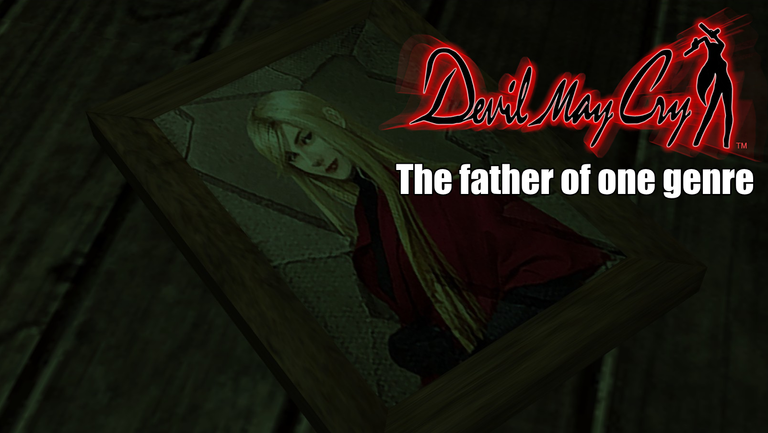
In an industry where it is increasingly less viable to take risks, where year after year large companies continue to bet on what works and not on innovation, it is difficult to find something refreshing that does not come from an indie studio, which arguably has kept the industry alive while large companies seek ways to fill their pockets with the next game as a service or another battle royale, so this time I wanted to go back a little to the past, to a time where it was not THAT strange to see experiments by the most well-known companies, like Capcom, which still to this day continues to try to innovate with its games, but has been doing so since its origins.
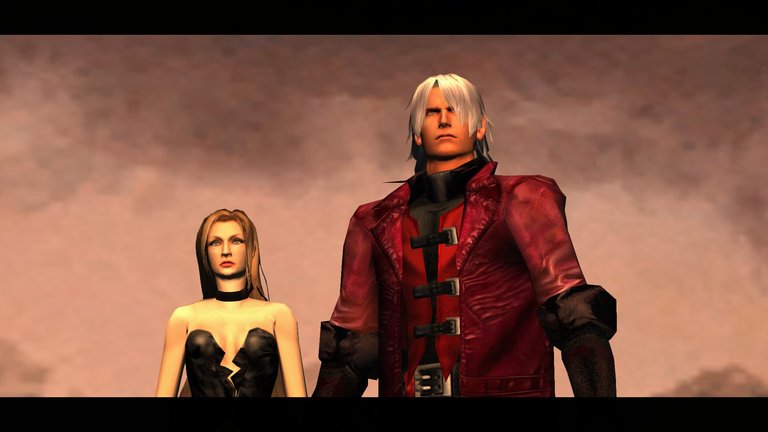
In this case I want to go back to the PS2 generation, which had the game that, broadly speaking, laid the foundations for a genre that has never been popular, but has always had excellent examples, Hack n' Slash. Bayonetta, No More Heroes, Vanquish, any game in the Dynasty Warriors franchise, God of War, and a long list of video games and franchises that essentially do the same thing, eradicate everything that crosses your path during your gameplay, but all these games come, besides the Beat em' up genre and games like Golden Axe, from the father of Hack n' Slash, the game that established the playable foundations and also gave rise to one of Capcom's best franchises, Devil May Cry.
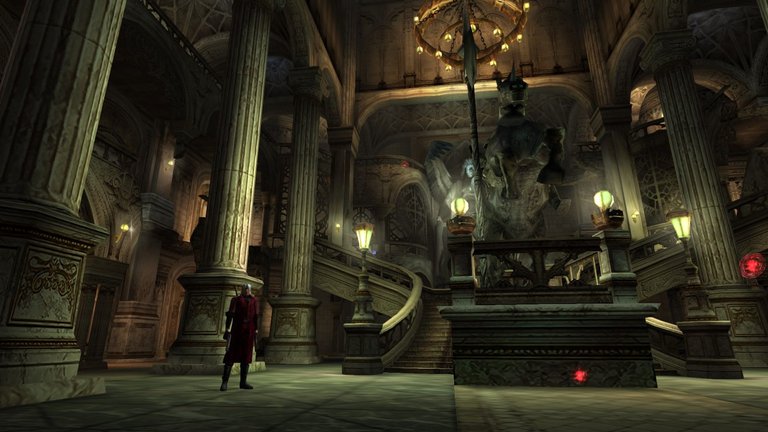
What started as Resident Evil 4 ended up becoming its own thing, at the time they didn't think this game would fit with the franchise's conventions and they were right, but that doesn't stop it from having an amazing Resident Evil vibe in every step we take, in addition to the puzzles being an important part of the game, perhaps much more simplified than in RE games, but following the basis of "take this object and place it where it belongs".
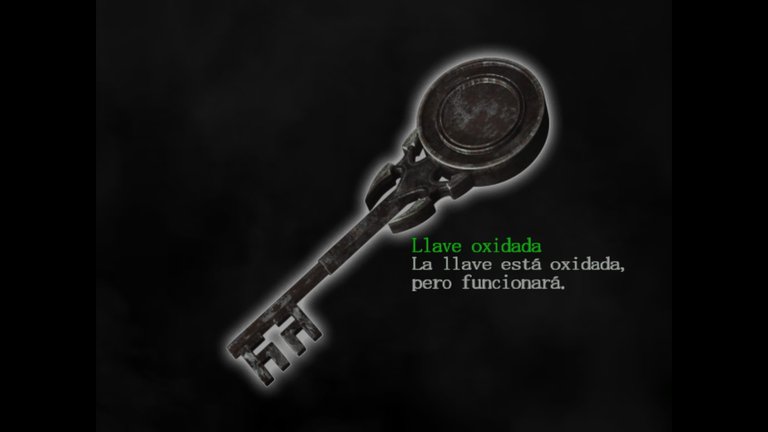
What DMC truly innovated in was in its combat and its unique style, Dante, the protagonist, is a demon hunter who accepts the job of a woman named Trish, who arrives at his agency by destroying the wall, piercing Dante's chest with his own sword, and then throwing a motorcycle at him, all for what? So that Dante can stop the motorcycle in mid-air with just his shots, also, he seems unharmed by all the damage Trish did to him, why? Because Dante has demonic powers and is much stronger than he appears, which is evident in his sarcastic and playful style almost all the time.
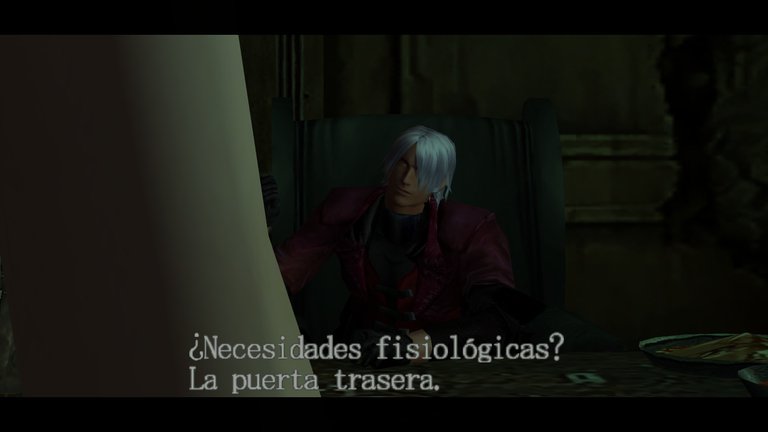
A character like Dante was something new in video games, or at least for most people, if they know of a previous character with similar characteristics I would love to know, because in my opinion Devil May Cry changed the super muscular and tough protagonist like the Doom Guy, those from Contra, or the Master Chief, who could also fit into this category, and instead, Devil May Cry gave us Dante, who seems to be taken from an anime and also works well in his own world in a video game, to the point that any attempt by Capcom to take away his protagonism has been negatively received by fans due to the love they have for him and the inexhaustible charisma of the character.
But let's talk about the first game and the precedents it set for what would come next, implementing things like the style meter, a rating that we are given based on our actions in combat and how well we perform, albeit in a rather strict way to introduce it since it is quite difficult to reach the S rank, the highest rating, which is equally achievable at the end of each mission, where we are required to complete each mission almost perfectly, without errors, and taking advantage of every last ounce of what the gameplay offers us.
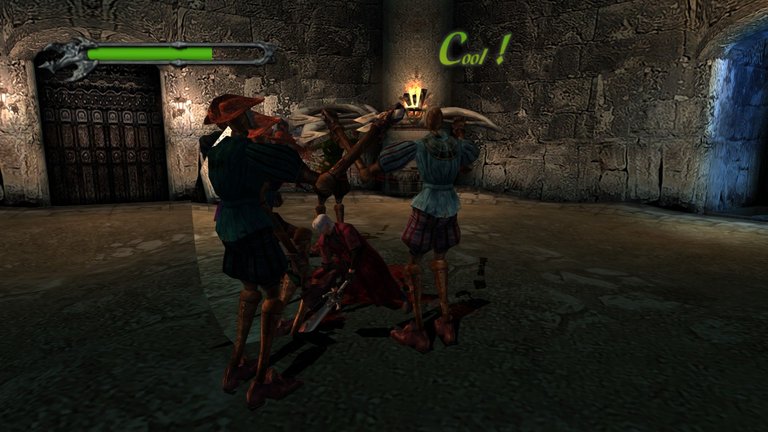
Dante will start the game with his a sword and two pistols, Ebony and Ivory, his signature pistols that he carries in all the games and that help to maintain the combo when we have enemies far away, something that we don't necessarily have to do throughout the game as we will progressively obtain new weapons and moves for these. Here come into play the red orbs, a currency that we will spend on statues scattered throughout the game to buy new moves, such as a forward attack or a double jump for some weapons.
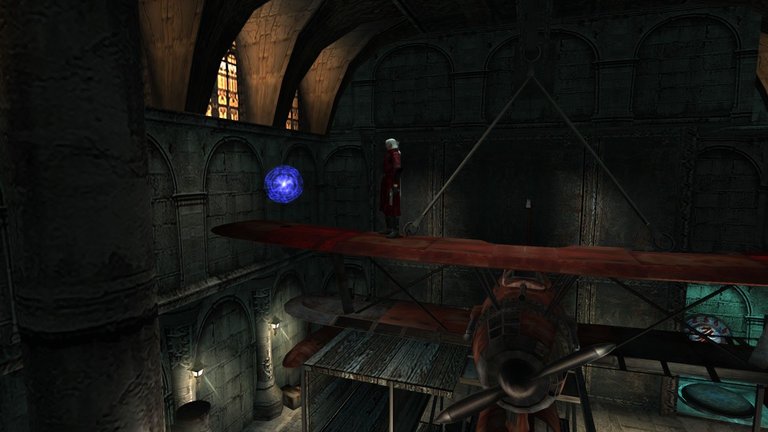
Between battles and battles we will have the puzzles that I already mentioned and also some bosses, which are formidable fights and although some are not SO difficult, others are hell, at least for me there is one that took me several attempts, for these cases we have the yellow orbs, which allow us to restart from the beginning of the fight, otherwise, if they run out we will have to restart the entire mission, the positive thing is that they are very short and if we save in the middle of the mission, even if it repeats we keep the orbs we obtained.
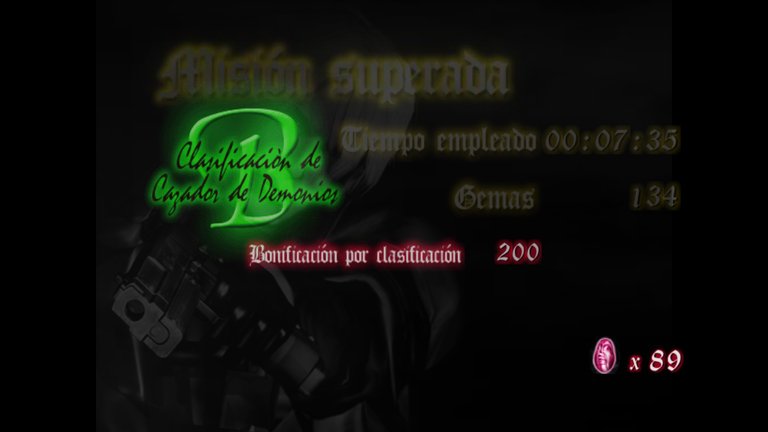
Another thing that I have not seen in any previous game and that DMC introduces, is a dumb detail, but one of those dumb things that absolutely captivates me, and it is that we can increase our health bar with blue orbs, but it's not this that I like, it's that if we increase the bar enough, A SECOND HEALTH BAR IS ADDED THAT WE CAN CONTINUE INCREASING, it is something that over time became an emblematic part of the franchise, a signature of the author because we can see it repeated in later DMCs despite changing directors, or other Hack n' Slash games like Bayonetta or Hi-Fi Rush, where Hideki Kamiya and Shinji Mikami were involved respectively.
Unfortunately, I don't have a screenshot with my double bar in the first DMC, but here is a screenshot of DMC 5 to give you an idea.
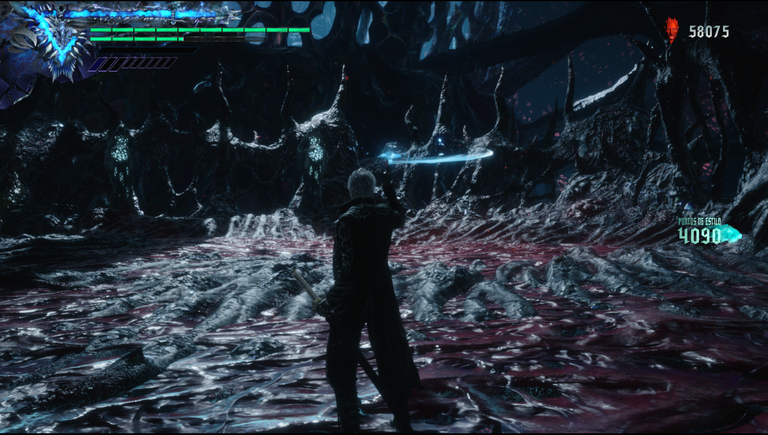
And in broad strokes that's DMC, the first installment of a franchise that is far from the pinnacle, that's left to later installments, but that nonetheless represented a turning point in the industry and in the way of designing frenetic combat, something I'll delve deeper into when it's my turn to talk about other DMC installments, until then, I hope you liked it and thank you very much for reading, see you around, bye bye!
Screenshots were taken by me 📷
Translated with Hive Translator

✨Español✨
✨Español✨

En una industria donde es cada vez menos viable asumir riesgos, donde año tras año las grandes empresas siguen apostando por lo que funciona y no por la innovación, es difícil encontrar algo refrescante que no venga de parte de un estudio indie, los cuales debatiblemente han mantenido viva la industria mientras las grandes compañías buscan la forma de llenar sus bolsillos con el siguiente juego como servicio u otro battle royale, por lo que en esta ocasión quise volver un poco al pasado, a una época donde no era tan extraño ver experimentos por parte de las compañías más conocidas, como Capcom, que aún a día de hoy sigue intentando innovar con sus juegos, pero que lo lleva haciendo desde sus orígenes.

En este caso quiero volver a la generación de PS2, la cual tuvo al juego que a grandes rasgos colocó los cimientos para un género que nunca ha sido popular, pero siempre ha tenido exponentes excelentes, el Hack n’ Slash. Bayonetta, No More Heroes, Vanquish, cualquier juego de la franquicia Dynasty Warriors, God of War y un largo etcétera de videojuegos y franquicias que van de virtualmente lo mismo, erradicar todo lo que se te cruce durante tu partida, pero todos estos juegos vienen, aparte del género Beat em’ up y juegos como Golden Axe, del padre de los Hack n’ Slash, el juego que sentó las bases jugables y dio lugar además a una de las mejores franquicia de Capcom, Devil May Cry.

Lo que empezó como Resident Evil 4 se terminó convirtiendo en su propia cosa, en su momento no pensaron que este juego encajaría con las convenciones de la franquicia y tenían razón, pero no por ello deja de tener un aire increíble a Resident Evil en cada paso que damos, además de que los puzzles son una parte importante del juego, quizá mucho más simplificados que en los juegos de RE, pero siguiendo la base de “toma este objeto y colócalo donde corresponde”.

En lo que verdaderamente innovó DMC fue en su combate y en su estilo único, Dante, el protagonista, es un cazador de demonios que acepta el trabajo de una mujer llamada Trish, quien llega a su agencia destrozando la pared, atravesando el pecho de Dante con su propia espada y luego tirándole una motocicleta encima, ¿todo para qué?, para que Dante pueda detener la motocicleta en el aire solo con sus disparos, además, parece ileso de todo el daño que le hizo Trish, ¿por qué?, porque Dante tiene poderes demoníacos y es mucho más fuerte de lo que aparenta, lo cual se nota en su estilo sarcástico y bromista en casi todo momento.

Un personaje como Dante era algo nuevo en los videojuegos, o al menos para la mayoría, si conocen un personaje previo con características similares me encantaría saberlo, pues a mi parecer Devil May Cry cambió al protagonista súper musculoso y rudo como podrían serlo el Doom Guy, los de Contra o el Jefe Maestro, que también podría entrar en esta categoría, y en cambio, Devil May Cry nos dio a Dante, que parece sacado de un anime y además, funciona bien en su propio mundo en un videojuego, al punto que cualquier intento de Capcom de quitarle el protagonismo ha sido recibido negativamente por los fans debido al cariño que se le tiene y a la inagotable carisma del personaje.
Pero hablemos del primer juego y los precedentes que creó para lo que vendría después, implementando cosas como el medidor de estilo, una calificación que se nos otorga en base a nuestras acciones en combate y a lo bien que nos desempeñemos, eso sí, se trata de una forma bastante estricta de introducirlo pues es bastante difícil alcanzar la S, siendo la calificación máxima, igualmente obtenible al final de cada misión, donde se nos exige completar cada misión de forma casi perfecta, sin errores, y aprovechando hasta el último gramo de lo que nos ofrece el gameplay.

Dante empezará el juego con su una espada y dos pistolas, Ebony y Ivory, sus pistolas insignia que lleva en todos los juegos y que ayudan a mantener el combo cuando tengamos enemigos lejos, algo que no necesariamente tenemos que hacer durante todo el juego pues progresivamente iremos obteniendo armas y movimientos nuevos para estas. Aquí entran en juego los orbes rojos, una moneda que gastaremos en estatuas repartidas por el juego para comprar movimientos nuevos, como un ataque en avance o un doble salto para algunas armas.

Entre combates y combates tendremos los puzzles que ya mencioné y además algunos jefes, que son peleas formidables y si bien algunos no son TAN difíciles, otros son el infierno, al menos para mi hay uno que me costó varios intentos, para estos casos tenemos los orbes amarillos, que nos permiten reiniciar desde el inicio de la pelea, de lo contrario, si se agotan tendremos que reiniciar toda la misión, lo positivo es que son muy cortas y si guardamos en medio de la misión, aunque se repita conservamos los orbes que obtuvimos.

Otra cosa que no he visto en ningún juego anterior y que DMC introduce, es una tontería, pero una de esas tonterías que a mi me atrapa absolutamente, y es que podemos aumentar nuestra barra de vida con orbes azules, pero no es esto lo que me gusta, es que si aumentamos la barra lo suficiente se nos agrega UNA SEGUNDA BARRA DE VIDA QUE PODEMOS SEGUIR AUMENTANDO, es algo que con el tiempo se convirtió en parte emblema de la franquicia, parte firma de autor pues podemos verlo repetirse en DMC posteriores a pesar de que cambiaron de director, u otros Hack n’ Slash como Bayonetta o Hi-Fi Rush, donde Hideki Kamiya y Shinji Mikami estuvieron involucrados respectivamente.
Lamentablemente no tengo una captura con mi barra doble en el primer DMC, pero aquí tienen una captura del DMC 5 para que se hagan una idea.

Y a grandes rasgos eso es DMC, la primera entrega de una franquicia que ni de lejos es la cúspide, eso se lo dejo a entregas posteriores, pero que a pesar de eso representó un giro de timón en la industria y en la forma de diseñar un combate frenético, algo en lo que seguiré profundizando cuando me corresponda hablar de otras entregas de DMC, hasta entonces, espero les haya gustado y muchas gracias por leer, nos vemos por ahí, bye bye!
Las capturas fueron tomadas personalmente 📷
Recuerdo que la primera vez que jugué este género fue con DMC3 Special Edition. Concuerdo con lo que dices. Sin duda es algo que te atrapa; desde el principio puedes notar que va a ser un juego genial, que te aportará algo que no existía en otro lado. Su estilo de combate me gustó mucho desde la primera misión, es casi como si hubiera estado esperando algo así y finalmente lo tenía frente a mí.
No sé cuántas veces me pasé este juego, pero fueron más de una. Es ese tipo de juego. El personaje de Dante era la definición de genial para mi yo joven y todavía lo sigue siendo, jajaja. Incluso me vi el anime, donde el personaje es un poco más serio, solo para consumir más contenido de Devil May Cry.
También me pasó que jugué al 3 primero que este, hace años, pero no avancé prácticamente nada así que ahora que los jugué todos, decidí empezar por el primero, tanto este como el 3 ofrecen bastante rejugabilidad, el 2 pues... está ahí, el 4 es regular y el 5 es excelente en prácticamente todo, como el 3.
Me falta ver el anime, y ahora que viene otro en camino esperemos que este Dante se asemeje al del 3, nos sabría decir, se ve bastante joven.
Gracias por comentar!
This may not be the best entry in whole franchise, but in my opinion it has some interesting aspects that the rest of the games lacks like the gothic-horror atmosphere and a more adventurous gameplay style. Hideaki Itsuno's idea of replacing Dante with Nero as the main protagonist in the latest games only because he was not the one who created him is also something that I don't completely like.